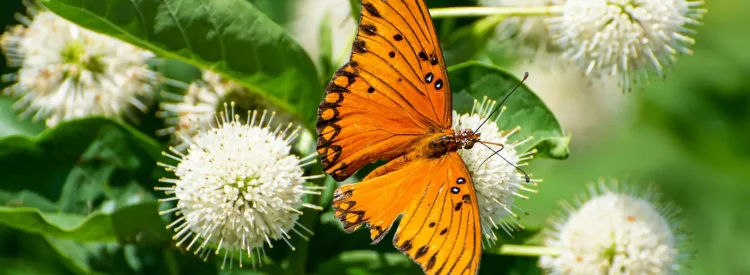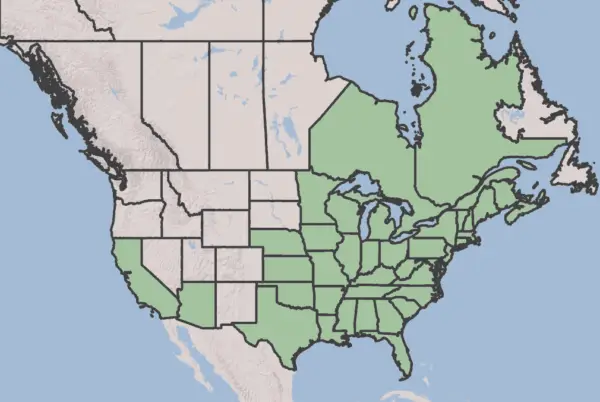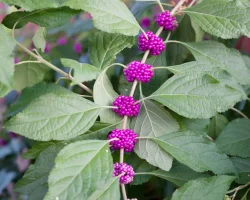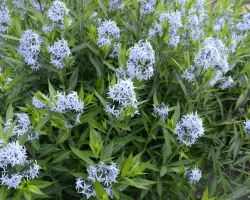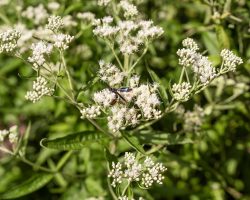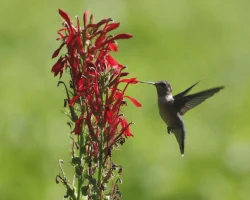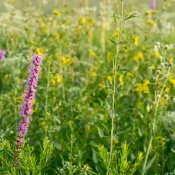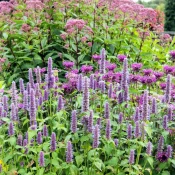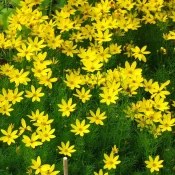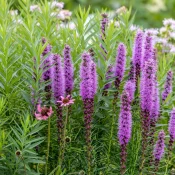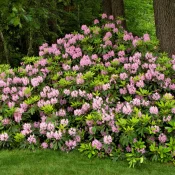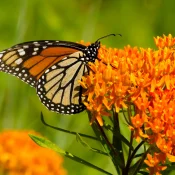Buttonbush is a showstopper of a shrub—made for sunny (or part-sunny) spots that stay wet. Its flowers look like fuzzy white planets, straight out of a Dr. Seuss book. Even better? It’s a butterfly and pollinator magnet. Native throughout the East Coast—from Maine down to Florida and west to Texas—this is the plant for that soggy corner of your yard you’ve been ignoring.
Why buttonbush matters
Planting native shrubs like buttonbush means beauty and impact. Native plants have evolved in their regions for thousands of years, thriving through every storm, drought, and flood—no special care required.
Here’s why buttonbush deserves a spot in your yard:
- Pollinator paradise: Those pom-pom blooms are perfect for butterflies to land and feed on.
- Rain-garden ready: Buttonbush thrives in soggy spots, transforming tricky areas into habitat.
- Low-effort gardening: Once established, all it needs is rainfall.
- Year-round structure: Even after the leaves drop, its glossy stems and sculptural branches shine.
Is buttonbush a good choice for my yard?
Yes—especially if you have a spot that stays wet or gets full to part sun. Buttonbush is ideal for:
- Rain gardens and areas that flood after storms
- Pond edges, ditches, and drainage swales
- Sunny areas that are too damp for most shrubs
- Wildlife-friendly gardens (especially for butterflies and birds)
If your space is consistently dry, buttonbush can survive—but it won’t thrive without regular moisture.

Buttonbush flowers are shaped perfectly for butterflies
The shape of the pom-pom flowers is perfect for butterflies to land on and warm themselves up. Butterflies need sunshine to help warm their bodies. This is why you’ll see butterflies sit on a plant and gently flutter their wings on a sunny day—they are cold and getting warmed up.
The flowers also help feed butterflies with their nectar. Planting a buttonbush is a win-win for having a beautiful yard while feeding butterfly communities.
Where is buttonbush native?
Buttonbush is native to more than half of the United States, from Maine to Texas, along with California and most of eastern Canada.
How to grow buttonbush
Buttonbush is an easy, forgiving shrub:
- Light: Full sun to part sun
- Soil: Moist to wet; tolerates temporary flooding
- Water: Keep consistently moist, especially the first year while getting established
- Maintenance: Minimal—just prune dead or leggy branches in early spring
- Type: Deciduous perennial shrub (drops leaves in winter)
Buttonbush is happiest in naturally damp spots—but it will also grow in average soil as long as it doesn’t completely dry out. Which is a perfect segway to…
Where buttonbush shines in your yard
Buttonbush anchors wet or flood-prone areas, adding shape and movement where lawns tend to fail. Plant it near ponds, ditches, or downspouts, and it will reward you with clouds of white blooms in early summer and sculptural stems through winter. They are also perfect for rain gardens.
Do you have a swampy part of your yard and you’re sick of mowing in the mud? Time to save some time and money and replace that lawn with a buttonbush.
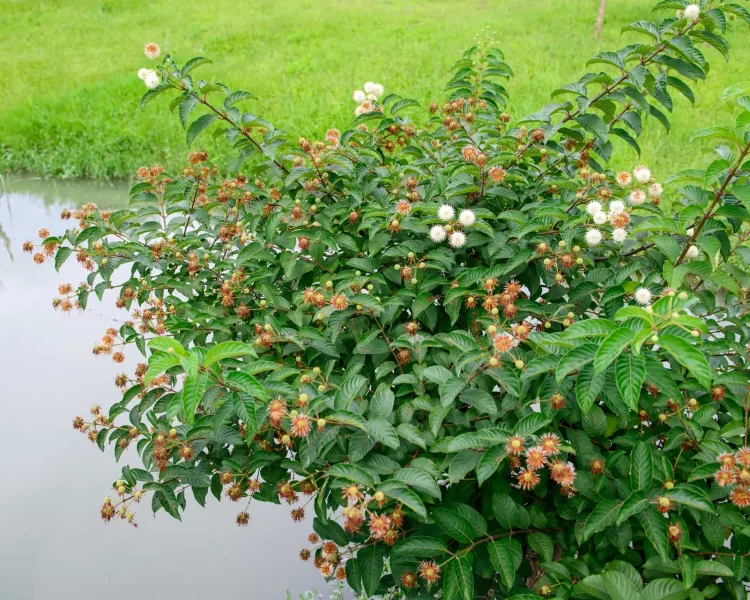
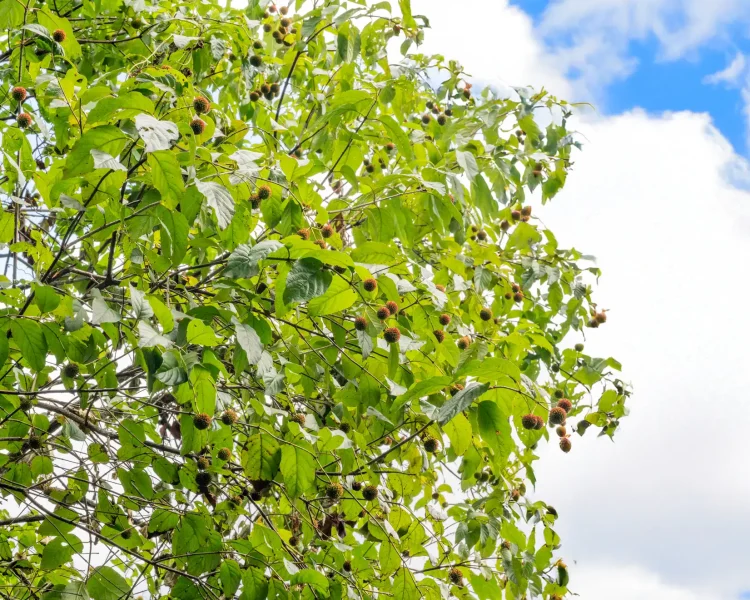
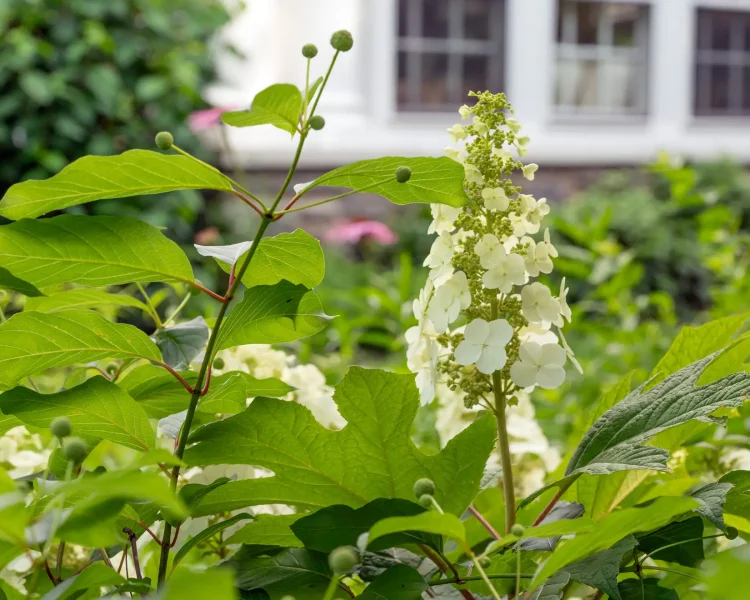
Can I plant a buttonbush in a drier area?
Buttonbushes can tolerate a dry spot but will require consistent moisture to thrive. If you’re looking for no-fuss native gardening, ensure that buttonbushes are in areas where water naturally pools.
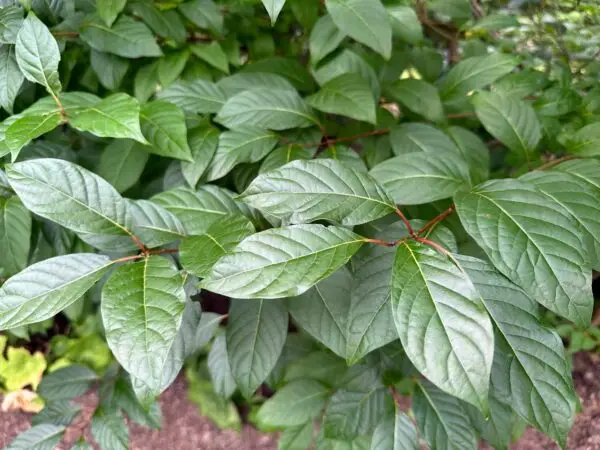
Even when not in bloom, buttonbushes look great
When not in flower, buttonbushes have glossy leaves paired with reddish stems. They will lose the leaves in the winter, leaving their sculptural branches on full display.
Each round ‘flower’ is actually dozens of flowers
The round flowers that inspired the name buttonbush aren’t just cute. They’re engineering marvels.
Each white sphere is made up of dozens of tiny tubular blossoms, each one offering nectar to pollinators. These perfectly spaced blooms evolved to help butterflies, bees, and hummingbirds feed simultaneously.
Many other plants have single ‘flowers’ that are actually made up of dozens of tiny flowers, including native asters and sunflowers.
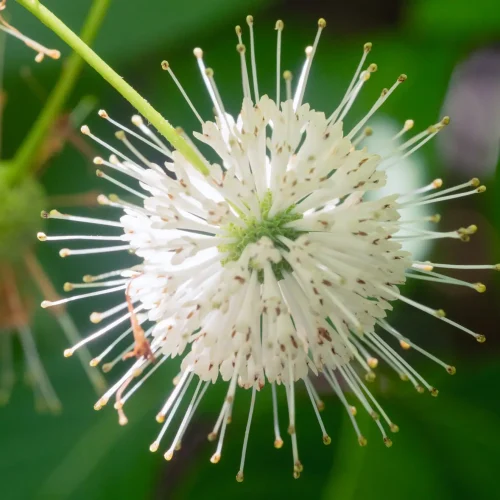
Where can I get a buttonbush?
Buttonbushes are unique native shrubs that can be challenging to find at conventional plant nurseries. Here are some ideas on where you can better find your own:
Where can I find seeds and plants?
Finding native plants can be challenging (we partly blame Marie Antoinette.) To make it easier, we’ve assembled four sourcing ideas.
300+ native nurseries make finding one a breeze
Explore 100+ native-friendly eCommerce sites
Every state and province has a native plant society; find yours
Online Communities
Local Facebook groups are a great plant source
What are good pairings for buttonbush?
Buttonbushes are perfectly paired with other native plants that like wetter areas, like cardinal flower, ironweed, and rose mallow.
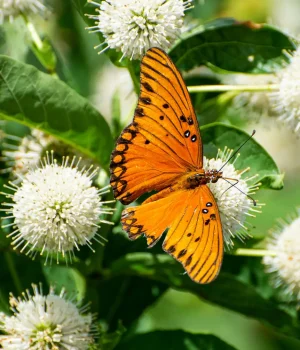
Pairs well with
To sum it up, buttonbushes are extremely photogenic native shrubs that thrive in moist or wet areas, like rain gardens. They are butterfly favorites, too. Plant a buttonbush (or a few!) and watch it return year after year with its round blooms and pollinator parties. Head over to our Beginner’s Guide to Native Host Plants if you’re into planting a butterfly paradise. Or meet other natives that love wet feet in our Best Native Plants for Rain Gardens. Happy planting!
Sources
- Johnson, Lorraine and Colla, Sheila. A Northern Gardener’s Guide to Native Plant and Pollinators; Creating Habitat in the Northeast, Great Lakes, and Upper Midwest. (2023), 174.
- Nelson, Gil. Best Native Plants for Southern Gardens. (2010), 307.
- Lady Bird Johnson Wildflower Center, Buttonbush
What if your feed was actually good for your mental health?
Give your algorithm a breath of fresh air and follow us.
